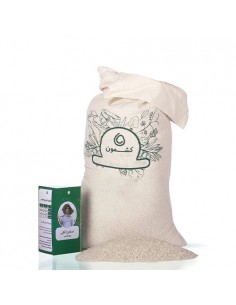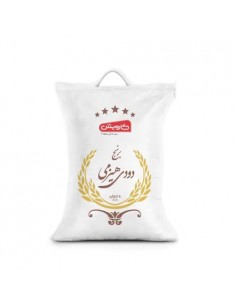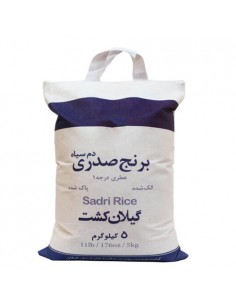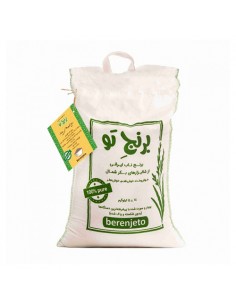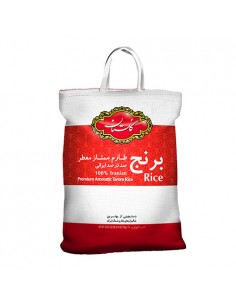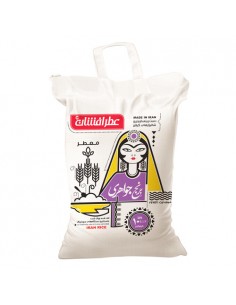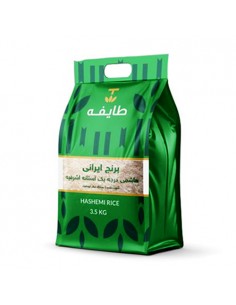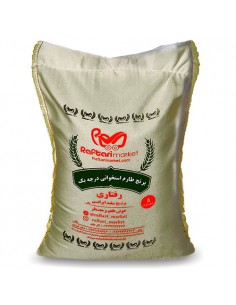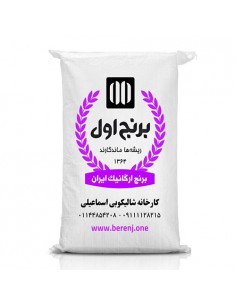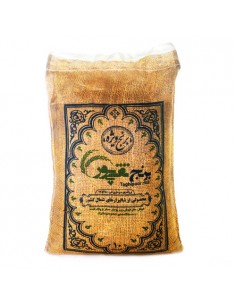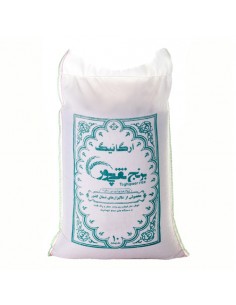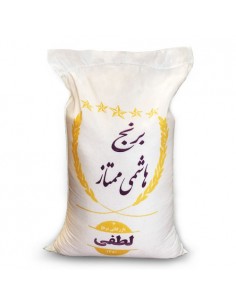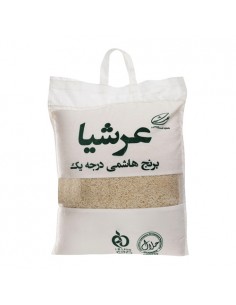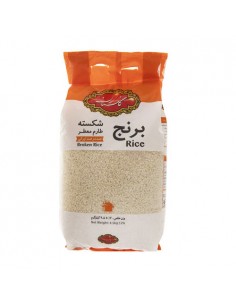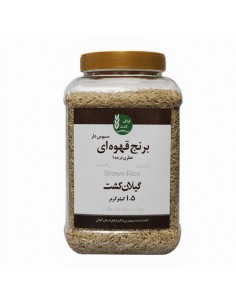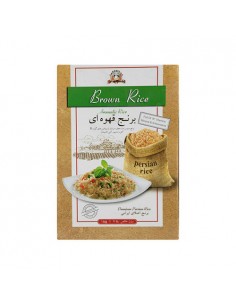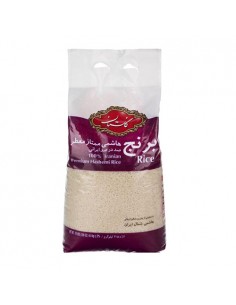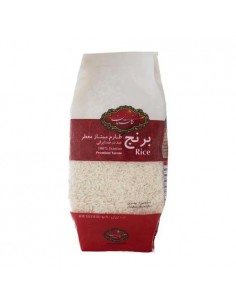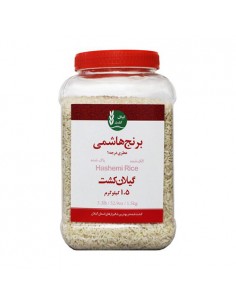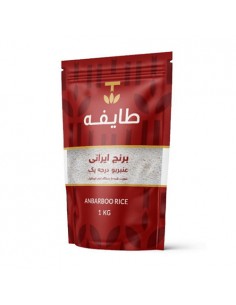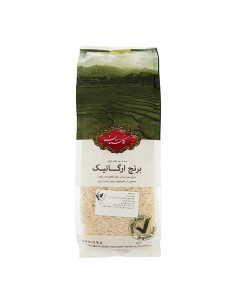Persian Rice
One of the main ingredients in most countries, rice feeds more than half of the world's population and has been grown in Iran for ages. Persian rice, ranked among the best in the world, has variants with unique aromas and tastes, which we'll get to further down. Let's start with the benefits of Persian rice.
Persian Rice Review, Select, and Buying Guide
The magic of Persian rice grain is unleashed when cooked to perfection, transforming into a fluffy, aromatic delight. Its secret lies in the ancient cooking method known as "chelow." A testament to the culinary wisdom of Iran, this technique breathes life into each grain. The process begins with parboiling the rice, followed by a meticulous draining phase, and culminates in a delicate steaming session.
Which Types of Rice Are Higher in Quality and Nutrition?
Just like with every other product, there are low-quality types of rice. So, how should we tell healthy, nutritious rice from those low in quality, and where can we buy top-quality rice?
Persian rice is superior to Basmati rice in quality, taste, and fragrance. However, the price of this excellent quality is considerable, and it's comparatively more expensive when compared to Basmati rice. Iranian rice has long been renowned for its exquisite flavor and aromatic aroma, famous for years. On the other hand, Iranian rice is not as tall as Basmati. For cooking, Iranian rice takes a great deal of talent and expertise.
Here are the more characteristics of this kind of rice:
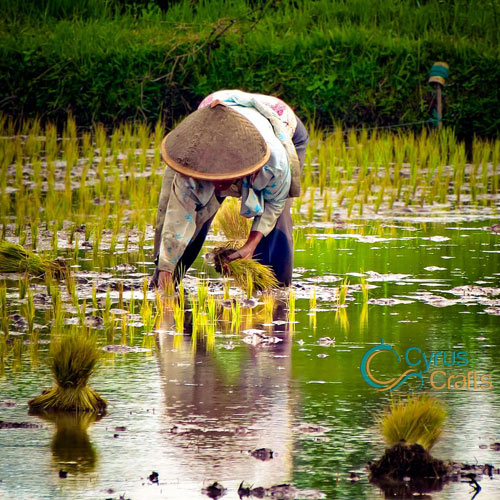
Cyrus Crafts; Luxury & Unique Products
Characteristics of Persian Rice
Avoid falling for a product's low price or attractive appearance when shopping for rice. Persian rice undoubtedly has the most pleasant taste and aroma in the world.
Thanks to the humid climate and the good-for-rice-growing soil in northern Iran, Persian rice smells and tastes better and has much more nutritional value than the other types.
Most rice from countries other than Iran is produced using the "molding" method, which involves completely milling second-and third-rate rice and then molding the resulting flour into same-sized grains. For this reason, non-Iranian rice may look nicer! Besides, the rice grown outside Iran is sometimes irrigated with sewage water, which is why it may contain extremely harmful chemicals such as cyanide and arsenic.
Asian countries produce most of the rice consumed around the world. Despite its pleasant aroma and taste, rice produced in Iran sometimes doesn't grow as long as Indian, Pakistani, and similar rice when cooked, confusing distinguishing top-quality rice. Another important thing to remember is that Persian rice is trickier to cook than other types of rice. You can make a delicious Persian rice dish if you know the recipe, but the health benefits, taste, and aroma make it worthwhile.
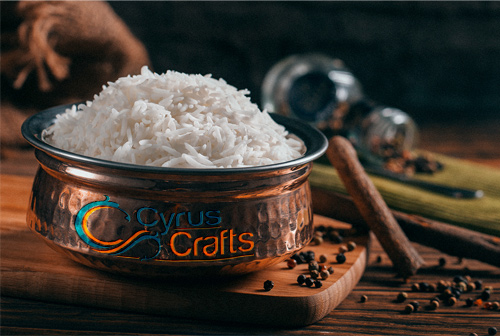
There is no doubt that Persian rice is world-class rice. But high quality comes at a cost; in the case of Persian rice, that cost is its higher price, which is completely reasonable given all the work that goes into its production. In addition, you can use Persian rice in various ways with different stews and kababs and saffron rice with the best quality saffron. To have delicious saffron rice, you must buy Iranian saffron; this will give the dish a beautiful aroma.
Different Types of Rice
There are many kinds of rice, so you must learn about them to make an informed decision. By introducing the finest and most well-known types, Cyruscrafts will help you become more familiar with Persian rice and buy the best type of rice in Canada and the United States.
There are different classifications of Persian rice:
Classification of Rice Based on Grain Length
- Long-grain: The length of this type's grains is at least 3–4 times their width.
- Medium-grain: This type has grains of medium length.
- Short-grain: This type has the shortest grains, which make a sticky texture when cooked
Classification of Rice Based on the Texture
Different types of rice make different textures when cooked due to a difference in the amount of starch each has. Accordingly, rice is classified texture-wise into "sticky" and "partially cooked":
- Sticky rice: This type is also known as "sweet rice" because it's common to add sugar, grape syrups, or similar condiments while cooking it. The rice gets doughy when cooked and is mostly used for making rice flour.
- Partially-cooked rice: This rice is light in weight because it's partially cooked with high-pressure steam before being milled. Pressure cooking is a process that causes starch gelatinization and produces grains that become light in weight and soft when cooked.
Classification of Rice Based on the Color
Rice is brown in its natural state but becomes white once the bran is removed. There are different colors of rice:
- White rice: The bran and germ of white rice are removed in the milling process. Rice with its bran removed is also called "milled rice."
- Brown rice: This rice retains its brown color because it contains bran and germ. Many diets recommend replacing white rice with brown rice because brown rice is rich in nutrients, including minerals and vitamins.
- Black rice: Very high in nutritional value, black rice gets slightly sticky when cooked and imparts color to mixed ingredients.
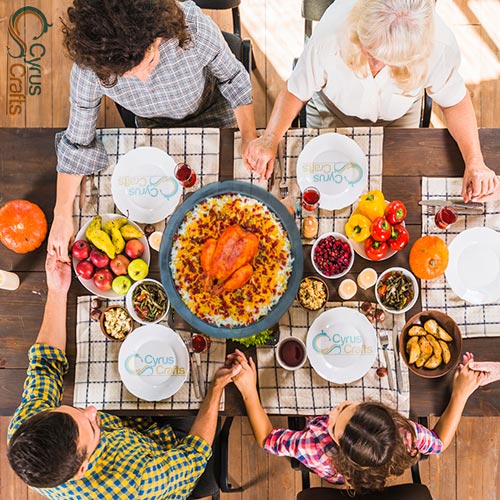
Here at Cyruscrafts, you can get more information about various Iranian foods, such as rice, date fruits, honey, saffron, etc., and buy them confidently.
What are the different types of Persian rice?
In Iran, there are many varieties of rice. Here are some of the most popular varieties:
Local Tarom rice: One of the most famous northern Persian varieties, local Tarom rice has long, beige-ish white grains.
Black-tail Tarom rice: This variety of rice is long-grain white rice covered in husks with black ends.
Tarom-Hashemi rice: A medium-grain rice, this variety retains its softness and pleasant taste hours after being cooked.
Rasht Tarom rice: It has a very pleasant taste and smell.
Deylaman Tarom rice: It's mostly grown in western Mazandaran Province, a region better suited for this purpose.
Sadri rice: Grown in Gilan Province, Sadri rice has beige-ish white grains that grow considerably in length and look nice when cooked, making this variety a favorite for use in dinner-party dishes. There are three sub-varieties to Sadri rice:
First-rate black-tail Sadri: One of the finest varieties of Persian rice, it has a pleasant smell and taste and grains with a desirable length.
Smoked Sadri: Sadri rice can be flavored by smoking. Smoked rice has its share of fans but may not be to everyone's taste.
Yellow-tail Sadri: A long-grain rice, this variety is less expensive than black-tail Sadri.
Fajr rice: Smelling very similar to Tarom rice, fajr grains are medium in length and light gray. This variety is the only genetically modified aromatic rice.
Shiroudi rice: This variety looks similar to Tarom and Hashemi rice but doesn't smell or taste as good, making it less expensive.
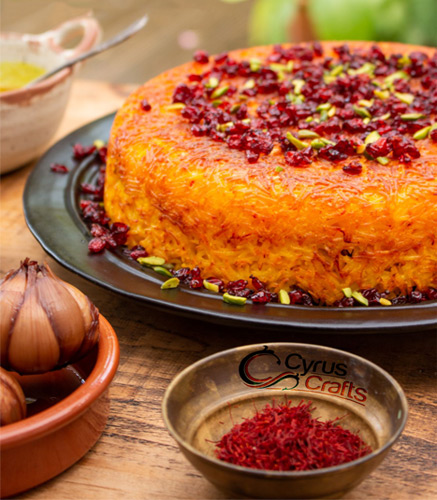
Benefits of Persian Rice
People in the past believed rice was a gift from God. Rice has a "cold temperament" in Persian traditional medicine, and its nutrients play a significant role in maintaining health.
Besides a distinct aroma and taste, Persian rice is beneficial for health in many ways, including:
- Its carbohydrates are metabolized by the body, quickly producing energy.
- Rich in nutrients, it's great for young children's growth and for treating malnutrition.
- It's an important source of Vitamin B1.
- It guarantees the good functioning of the digestive system and prevents chronic constipation.
- It stabilizes blood sugar levels and improves the body's immunity against conditions such as bloody diarrhea, high blood pressure, and heart disease.
- The rice and its water improve skin health in many ways, including reducing premature aging, brightening the skin, and giving it a glow.
- White rice increases sperm count and breast milk and helps treat insomnia, kidney stones, varicose veins, stomach ulcers, and other conditions.
- Brown rice can help you lose weight.
Our list of rice benefits continues. There are many more, but we'll skip them since these are enough to convince you to eat rice.
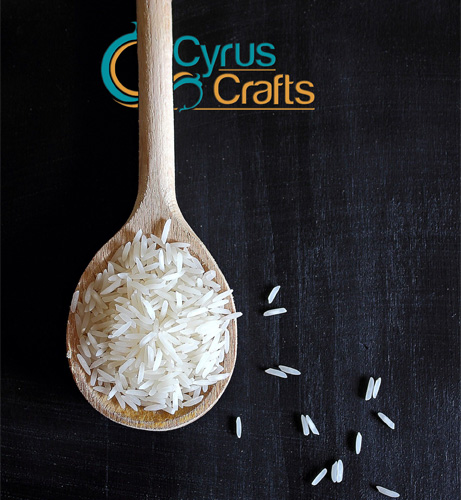
Nutrient Content of Rice
All types of cooked rice contain the following nutrition information per 100 grams:
| Rice | Calories (kcal) | Fat (g) | Sodium (mg) | Carbohydrates (g) | Fiber (g) | Sugars (g) | Protein(g) | Magnesium (mg) | Iron (mg) | Thiamin (mg) |
|---|---|---|---|---|---|---|---|---|---|---|
| White Rice | 242 | 0.4 | 0 | 53.4 | 0.6 | 0 | 4.4 | 0.7 | 2.7 | 0.3 |
| Brown Rice | 125 | 0.1 | 301 | 22.78 | 1.8 | 0.35 | 2.56 | _ | 0.42 | _ |
| Black Rice | 173 | 2 | 4 | 38 | 3 | 1 | 5 | _ | _ | _ |
How to Recognize Top-Quality Persian Rice
Characteristics that make top-quality Persian rice distinguishable are:
- Aroma and taste: It has a pleasant smell and taste.
- Perfect grains: It's normal for a given portion to contain up to 5% of shorter or broken grains, but the rest are intact.
- Dryness: It has zero humidity.
- Half-bright tone: It is half-bright, whereas non-Iranian rice is darker.
CyrusCrafts will provide you with high-quality and tasty meals as part of its specialized activity in preparing, selling, and exporting the best Persian rice (Iranian rice) in Canada and the United States so that you can have a wonderful and one-of-a-kind taste and serve your family and your guests in a healthy, unique and different way.


